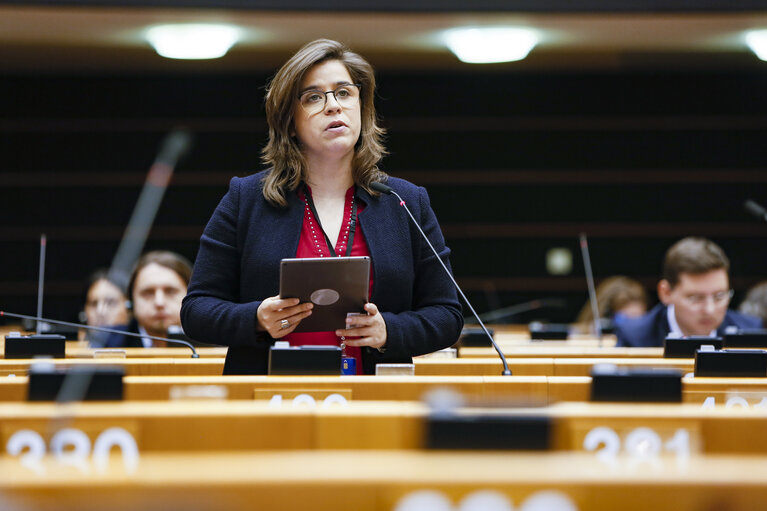Ondrej Knotek (Renew, CZ) and Sara Cerdas (S&D, PT) are MEP Champions of Together for Rare Diseases (Together4RD). This grouping of senior research figures, patients and EU officials is steered by representatives from ERN Coordinators, EJP-RD, Orphanet, EURORDIS and industry. “Together4RD is a chance to harness more effectively the complementary expertise of parallel powerhouses of medical innovation in Europe: ERNs, the research community, patient aspirations, and industry,” says MEP Knotek.
The challenge
The virtual networks of ERNs created in 2017 are unlocking better care for people living with rare diseases by concentrating the knowledge and resources of more than 900 highly specialised healthcare units from over 300 hospitals across 26 EU countries.
But links are still slender with the researchers and companies that can help transform this cumulative intellectual wealth into effective therapies. There is no overarching framework for capitalizing on the ERNs’ clinical data, and chances are being missed for better understanding of rare conditions and the development of new therapies.
According to Professor Maurizio Scarpa of MetabERN, even when presented with an opportunity to work with outside partners, “The legal status of ERNs raises complexities over contracting issues and data protection, and restrictions on funding and governance arrangements make collaboration challenging in practice, particularly with industry.”
Similarly, industry partners Alexion, Novo Nordisk, Sanofi and Takeda say: “We want to see action to unlock the potential of data and digital capabilities and empower ERNs to partner with the pharmaceutical sector where there is mutual benefit.”
“Together4RD is a chance to harness more effectively the complementary expertise of parallel powerhouses of medical innovation in Europe”
- Ondrej Knotek MEP
Political will
The Commission is now looking at expanding ERNs’ role, and with major changes underway in the EU’s pharmaceutical legislation – on everything from the OMP Regulation to the European Health Data Space - there is an opportunity to adapt the systems to make a closer match with needs. The role of the Parliament will therefore be critical to shaping the future of ERNs and achieving Together4RD’s objectives, says MEP Cerdas. “The ways ERNs and industry can collaborate – like defining research priority areas, supporting clinical trial readiness, recruiting patients for studies – are predicated on creating EU-level infrastructure for health innovation, something colleagues and I have been working on for some time.”

There has been plenty of groundwork for such a shake-up, including the EURORDIS Rare2030 and Recommendations to achieve a mature ERN system in 2030. Cerdas says better links will be a crucial response both to unmet needs among rare disease patients and to realising EU potential to lead the way in R&D. Steering Group member Matt Bolz-Johnson from EURORDIS shares the view that “Together4RD can reinforce the EU’s efforts for people living with a rare disease, dovetailing with widespread calls for a new policy framework for rare diseases in Europe.”
“The ways ERNs and industry can collaborate – like defining research priority areas, supporting clinical trial readiness, recruiting patients for studies – are predicated on creating EU-level infrastructure for health innovation.”
- Sara Cerdas MEP
Gathering support
Already, Together4RD is gathering supporters, and will be highly visible as part of the European Conference on Rare Diseases, starting today, June 27. Plans include finalisation of a white paper of recommendations on registries and clinical research, and the creation of a multi-stakeholder platform with clear policy asks, to be unveiled at an event in November at the Parliament. Register your interest to attend the Brussels launch, and find more details of Together4RD, here.
Knotek concludes: “MEPs can help make a difference. The unmet needs of people living with rare diseases are too great to admit bureaucratic obstacles. Together4RD is an example of how common cause can overcome unintended obstacles as a pathway to improved care for patients.”
Together4RD is an agile multi-stakeholder initiative aimed at supporting ERNs to collaborate with stakeholders to pursue opportunities that will address unmet medical needs of people living with rare diseases. The Secretariat, provided by FIPRA, is aided by funding partners Alexion, Novo Nordisk, Sanofi, Takeda, EFPIA and EUCOPE.
Sign up to The Parliament's weekly newsletter
Every Friday our editorial team goes behind the headlines to offer insight and analysis on the key stories driving the EU agenda. Subscribe for free here.